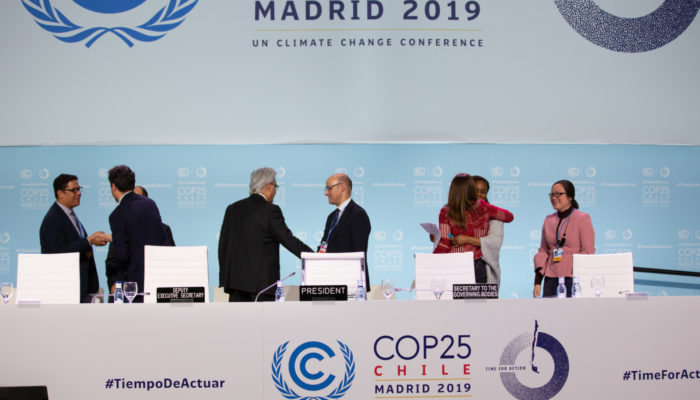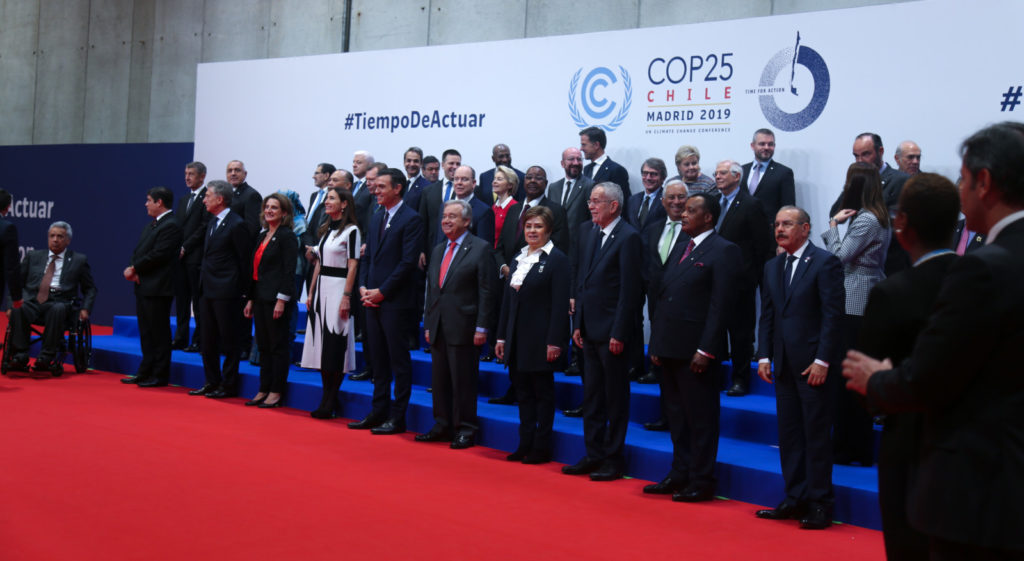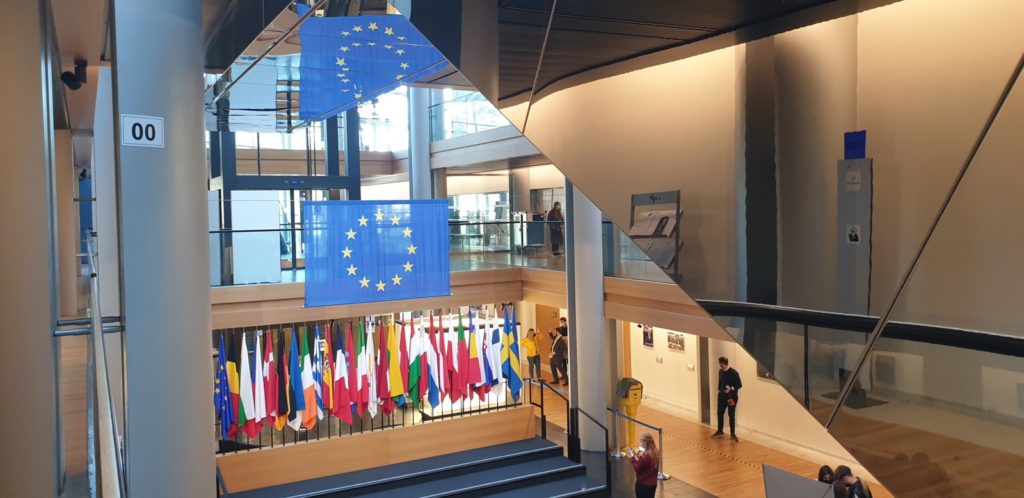
The 26th session of the Conference of the Parties (COP26) to the United Nations Framework Convention on Climate Change (UNFCCC) will take place from 31 October to 12 November 2021, in Glasgow, Scotland. With the exception of 2020, COPs are held annually and provide a space for world leaders to negotiate climate policies, targets, and the next steps that need to be take to reduce global emissions. They also set the stage for numerous side events and discussions that are attended by scientists, industry leaders, media representatives, members of the public, and policymakers. The negotiations that take place during COPs between world leaders can be tense and generally starts weeks beforehand. COP26 is no different and most nations have already updated their climate targets in preparation for the global meeting. This month’s GeoPolicy blog post will outline some of COP26’s key discussion points, the EU’s new targets and likely positions, and how you can get involved!
What’s on the Agenda for COP26?
Achieving the goals of COP25
Momentum for COP26 has been growing for longer than a normal COP with the date of the event being pushed back an entire year due to Covid-19. Even without this delay, COP26 was always going to be one of the more important COPs with key decisions from COP25 being pushed back by delegates who preferred to postpone rather than sign-off on a weakened deal. Key decisions that were postponed in 2019 and that will need to be addressed in November include how an international carbon market (Article 6) should be structured and how countries in the global south that have already suffered climate change impacts should be compensated (i.e. loss and damage).

COP25 Heads of State Family Photo. Credit: UNFCCC
Revisiting the Paris Climate Agreement
The Paris Climate Agreement is a legally binding international treaty on climate change that was adopted by 196 Parties at COP21 in Paris. Its goal is to limit global warming to below 2°C, preferably to 1.5°C, compared to pre-industrial levels. COP26 is the first time the treaty will be revisited and countries will need to show what they have done to meet their national targets.
Not only will countries need to show what they’ve done but they will also be asked to present their ambitious 2030 emissions reductions targets that align with reaching net zero by 2050. The Parties are also hoping to agree on a common time frame for their next commitments (e.g. every 5 years).
Scaling up climate finance
Climate finance seeks to support climate mitigation and adaptation in countries in the global south. The Paris Agreement reaffirmed the obligations of economically developed countries to provide financial resources to assist countries in the global south to reduce their emissions. Countries in the global north not only tend to have higher emissions per capita, but have also caused and benefited the most from the industrialisation that is causing climate change. The principle of “common but differentiated responsibility and respective capabilities” and climate finance was established as a result of this. Although there has been a commitment to mobilise $100 billion annually to support climate activities in the global south, this has not yet been realised.
What are the EU’s priorities for COP26?
While it can be difficult to predict the outcome of the COP negotiations, the European Commission, Parliament, and Council have all agreed that greater climate action is needed. By outlining their climate commitments and priorities, the EU will hopefully push less ambitious countries at the COP to do more. Similarly, EU legislators might find themselves pressured to increase their commitments or change their priorities when faced with the commitments of more aspirational countries.

The European Parliament in Strasbourg. Credit: Chloe Hill
Creating a robust international carbon market
The European Parliament has highlighted the need for robust international rules to govern international carbon trading. The Parliament wants rules that prevent nations from double counting their credits and relying on units that were issued under the Kyoto protocol. It also stipulated that the Clean Development Mechanism, which allows nations to establish greenhouse gas emissions-reducing projects in other countries and claim the saved emissions as part of their own efforts, should be eliminated immediately.
The EU’s emission reduction targets
The EU has recently increased its climate target and is now aiming to reduce greenhouse gas emissions to at least 55% below 1990 levels by 2030. It is hoped that this increase will not only inspire other countries to increase theirs but also give certainty to policymakers and investors. At COP26, the EU will also push for climate targets to be updated on a common time frame of five-years. Having this relatively short time frame will hopefully encourage all countries to be more responsive to the science, and develop societal, economic, and technological changes more quickly.
Increasing climate finance
The EU has committed to adding $4 billion to the $25 billion that they provide to international climate finance annually. European finance minsters have called on other countries in the global north to increase their contribution to meet the 2020 climate finance goal of $100 billion.
How can you participate in COP26?
Actually getting yourself a ticket to COP’s “Blue Zone” (where the negotiations happen) can be a bit of a challenge. Seats are reserved for representatives of Parties to the Convention and Observer States (e.g. national representatives), members of the press and media, and representatives of Observer Organisations. Most scientists who have access to the Blue Zone of the COP do so under the status of an Observer Organisation. The process of obtaining an Observer Organisation status for your institute is relatively straight forward but very time consuming. The process has already closed for COP27 but it could be a viable option if you’d like to attend COP28 (in 2023). If you are looking to score a ticket to COP27’s Blue Zone, it might be a good idea to keep an eye on your favourite scientific organisations! Some, such as the European Space Agency, offer their members badges to attend the COP under their Observer status. You can find the full list of Observer Organisations here.
But don’t worry if you’ve missed these deadlines because there’s still plenty happening outside of COP26’s Blue Zone! COP26’s Green Zone is a platform for the general public, youth groups, academia, artists, and business and others to have their voices heard. Those working within this space will host numerous events, exhibitions, workshops, and talks. You can view the programme of these events here or subscribe to the COP26 YouTube channel here. You can also follow the climate laws being implemented by countries and regions at any time of the year through this interactive map.

Friday for Future, Day 13. Credit: UNFCCC
Learn more
To learn more about what is coming up at COP26 and how the IPCC’s Sixth Assessment Report could impact it, watch the upcoming EGU webinar The IPCC at COP26 with Sarah Connors.




